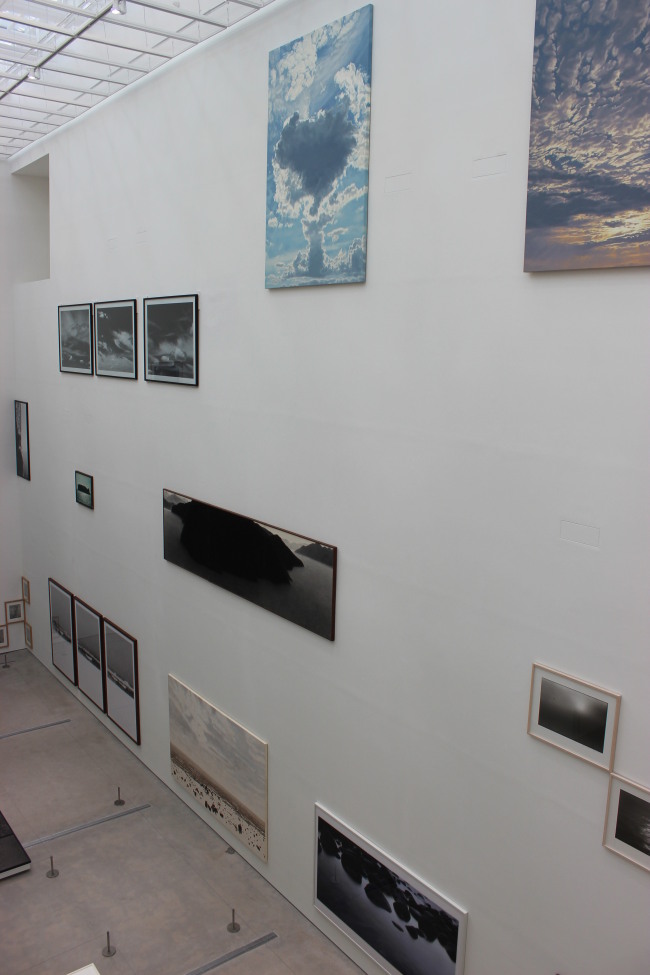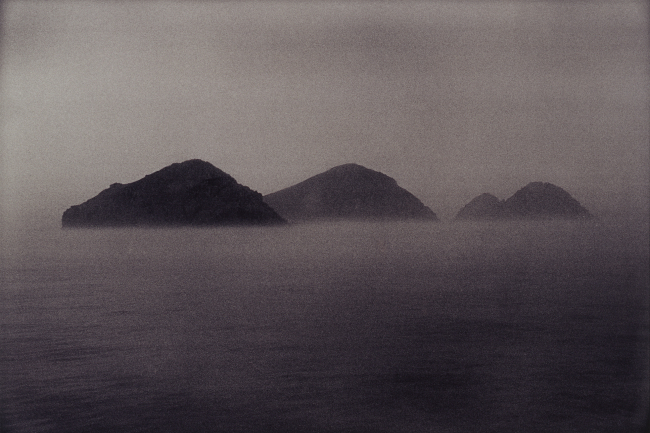Exhibition looks into Korean beauty
Landscapes, natural elements, people in focus at the National Museum of Modern and Contemporary Art, Korea
By Lee Woo-youngPublished : May 27, 2014 - 20:52
Buddhist statues, stupas and ceramics have been associated with the image of Korea in overseas exhibitions of its culture and traditions.
But an exhibition underway at the National Museum of Modern and Contemporary Art, Korea seeks to break the stereotype with art inspired by Korean landscape.
One of the exhibition walls displays images of Korean landscapes captured by observant artists ― majestic white clouds in a blue sky; small islands on the distant horizon; tall pine trees and the effect of a breeze blowing through a thick bamboo forest.
But an exhibition underway at the National Museum of Modern and Contemporary Art, Korea seeks to break the stereotype with art inspired by Korean landscape.
One of the exhibition walls displays images of Korean landscapes captured by observant artists ― majestic white clouds in a blue sky; small islands on the distant horizon; tall pine trees and the effect of a breeze blowing through a thick bamboo forest.

The landscapes have been chosen to describe the “Korean Beauty” for the exhibition to show esthetic aspects of Korean art and sentiments.
The exhibit is largely divided into two sections: works that portray landscapes, and works inspired by natural elements and ordinary Korean people.
Works in the landscape category include Bae Bien-u’s black-and-white photographs of pine trees and rocky streams, Kim Bo-hie’s meditative island scenes and Kang Un’s paintings of pure white clouds.

Abstract paintings and sculptures of landscapes evoke reverie and contemplation. Calligraphic abstract paintings and works inspired by moon jars contain spiritual esthetics, while exploring the essence of Korean beauty.
Lee U-fan’s famous “Correspondence,” a metaphoric expression of relationships and encounters, attempts to resemble an aspect of nature through isolated strokes of blue paint. Lee Kang-so’s “Emptiness” creates a spontaneous ambience with free flowing brushstrokes on a large canvas that takes up an entire exhibition hall.
Koo Bohn-chang’s “Vessel,” a six-photo series of a moon jar, epitomizes the unsophisticated spirit of ordinary artifacts that Korean artists have sought to portray throughout generations. The photographs reveal different qualities of the traditional white Korean porcelain that people pass over casually. The flawless moon jar looks perfect in shape, but the six photos gradually expose imperfections in the surface as the lighting is reduced.
The life of average Koreans on view in the other section is projected through bustling Seoul cityscapes and portraits of people there.
Choi Ho-chul’s “Euljiro Circular Railway” depicts a hilly shantytown of Bongcheon-dong in an illustrative style. The painting is an attempt to uncover unnoticed aspects of Seoul by capturing scenes inside and outside a train on Line No. 2, one of the busiest subway lines in Seoul.
Keem Sang-woo’s “Generation” portrays uncharacteristic average Koreans, but viewers can guess their relationship from appearance. They look like father and son, sisters and couples.
The exhibition “Korean Beauty: Two Kinds of Nature” runs through Sept. 28 at the Seoul Museum of the National Museum of Modern and Contemporary Art, Korea. For more information, call (02) 3701-9500.
By Lee Woo-young (wylee@heraldcorp.com)


![[AtoZ into Korean mind] Humor in Korea: Navigating the line between what's funny and not](http://res.heraldm.com/phpwas/restmb_idxmake.php?idx=644&simg=/content/image/2024/04/22/20240422050642_0.jpg&u=)


![[Herald Interview] Why Toss invited hackers to penetrate its system](http://res.heraldm.com/phpwas/restmb_idxmake.php?idx=644&simg=/content/image/2024/04/22/20240422050569_0.jpg&u=20240422150649)
![[Exclusive] Korean military set to ban iPhones over 'security' concerns](http://res.heraldm.com/phpwas/restmb_idxmake.php?idx=644&simg=/content/image/2024/04/23/20240423050599_0.jpg&u=20240423183955)
![[Graphic News] 77% of young Koreans still financially dependent](http://res.heraldm.com/phpwas/restmb_idxmake.php?idx=644&simg=/content/image/2024/04/22/20240422050762_0.gif&u=)






![[Exclusive] Korean military to ban iPhones over security issues](http://res.heraldm.com/phpwas/restmb_idxmake.php?idx=652&simg=/content/image/2024/04/23/20240423050599_0.jpg&u=20240423183955)



![[Today’s K-pop] Ateez confirms US tour details](http://res.heraldm.com/phpwas/restmb_idxmake.php?idx=642&simg=/content/image/2024/04/23/20240423050700_0.jpg&u=)